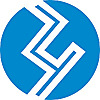ARTICLE AD BOX

The emergence of the Ordinals protocol transformed how we perceive and interact with the world’s leading cryptocurrency network and asset. Launched in January 2023 by Bitcoin developer Casey Rodarmor, Ordinals enabled bitcoiners to ‘inscribe’ media (images, text, audio, video) onto satoshis, Bitcoin’s lowest denomination, effectively turning them into NFTs.
As momentous as Ordinals was, however, the subsequent arrival of BRC-20 – a token standard enabling users to mint and transfer tokens on Bitcoin physically – further cemented the vision. And if you know anything about token standards, they evolve. Hence, the development of BRC-420 further extends the potential of crypto-assets on the Proof-of-Work blockchain.
What is BRC-420?
Launched last September, BRC-420 is an open-source asset management protocol that extends the capabilities of BRC-20 by supporting metadata capabilities. Inspired by Ethereum’s ERC-721 NFT standard, BRC-420 allows users to create, manage, and share complex asset formats through recursion. This includes game items, 2D and 3D animations, effects, and even metaverse gameplay modules.
The underlying architecture of BRC-420 is based on the Bitcoin metaverse protocol Bitmap and Ordinals itself. Interestingly, the protocol offers the ability to establish usage rights and royalties on the basis of a single Ordinals inscription, the terms for which are embedded in the metadata and enforced by marketplaces and platforms that support BRC-420.
BRC-420 has, in a relatively short period of time, breathed fresh life into the Bitcoin NFT space by empowering creators and expanding the use-cases for BTC-based tokens, particularly in the realms of the metaverse. By leveraging the security and liquidity of Bitcoin while delivering a similar user experience to Ethereum NFTs, BRC-420 has generated huge hype.
Many projects are already utilizing BRC-420. Mineral, a Singapore-based crypto protocol, offers a BRC-420 based BTC inscription crypto-asset backed by BTC mining power, enabling users to receive periodic interest in BTC by staking. Recursive Doodinals, conceived by the same team behind BRC-420, allows users to create their own recursive art using doodles or inscriptions of their choice.
And then there is BRC-420 BlueBox, the first asset issued by Bitmap which boasts a total supply of 10,000.
Believe the BRC-420 Hype
Merlin Chain, a Bitcoin Layer-2 solution that operates a multi-token Proof-of-Stake consensus, is a prime example of a platform leveraging the power of BRC-420. Merlin Chain allows users to pledge BTC, MERL, or other mainstream BRC-20 and BRC-420 assets to compete for node qualifications.
Less than six months following the protocol’s introduction this past February, on-chain data revealed that over $176 million worth of BRC-420 assets had entered the Merlin Chain pledge activity.
Merlin Chain is the brainchild of the team that developed BRC-420. With a recent growth of 2,000% between March and April, Merlin Chain has become a top 10 chain and is currently the biggest sidechain in the growing Bitcoin ecosystem.
Committed to advancing Bitcoin by empowering native L1 BTC assets and protocols, Merlin Chain supports various Bitcoin protocols, including Atomicals, Pipe, and Stamp, in addition to BRC-20 and BRC-420.
Building a Better Bitcoin Ecosystem
Adding metadata capabilities through BRC-420 has reinvigorated what can be achieved with crypto-assets on the Bitcoin blockchain.
BRC-420 opens up a world of possibilities, from enabling more specialized functionalities like governance, staking, and compliance to allowing developers to leverage existing innovations to create transferable metaverse assets.
As the Bitcoin DeFi, NFT, and metaverse landscape continues to evolve, BRC-420 is likely to continue pivotally shaping the future of the world’s leading crypto network.
.png)
 5 months ago
2
5 months ago
2








 English (US)
English (US)